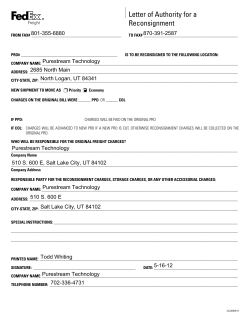
Phys 208 - Recitation E-Fields
Electric Fields - Phys 208 1. Fields from isolated charges a. For the three arrangements of charges below, draw the electric field direction at each place where a dot is located. Try to estimate the relative magnitudes of the field vectors. (All charges have the same magnitude) A B C b. For the three arrangements of charges below, draw the electric field direction at each place where a dot is located. Try to estimate the relative magnitudes of the field vectors. A B C 2. Fields from continuous charges 2.1 A linear charge distribution. There is an amount of charge evenly distributed in a linear fashion. x L a. If the length of the rod is , what will the linear charge density, , of the rod be? b. What will the linear charge density be a section that is one-tenth the length of , i.e. c. How much charge, call it 1/100 the length of ? , (in terms of ? and ) will there be on a section of the rod equal to d. What will the electric field be due to that small bit of charge, where the charge is located? be, at a distance away from e. Now, our goal is find the field at a point P(x,y), any where above this linear line of charge. To make life easier, we'll say that point P lies on the x = 0 line, however, the center of the charged line does not necessarily lie on this line. Knowing that the charge on a infinitesimal section dx, located at point x, will be given given by: , find the electric field at point P due to this infinitesimal section. Your answer should contain , , , , and . Call this field . y P a x=0 f. Now find field. b and , that is, the x and components of this contribution to the total electric g. Since these components are just the contributions from a small segment of the total linear charge, we'll need to integrate over the length of the charged line to find the full contributions. Set up these integrals for both the x component and the y component. h. Considering the rod to extend from to , use these as the limits of integration and perform the definite integrals to obtain expressions for the components of the electric field in and for our point P.
© Copyright 2025





















